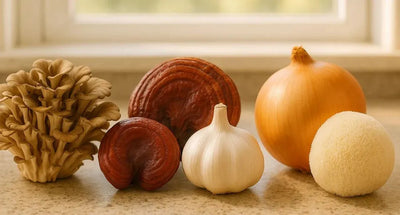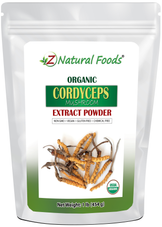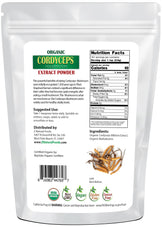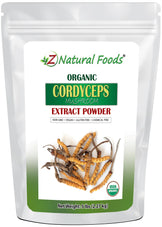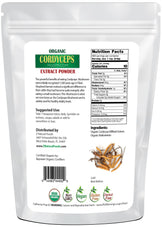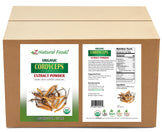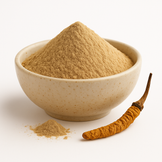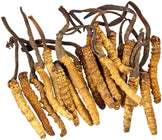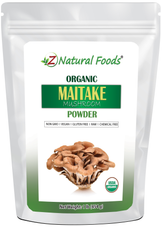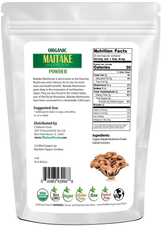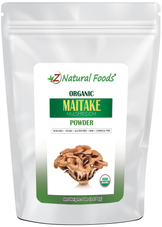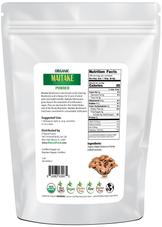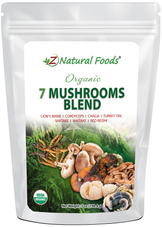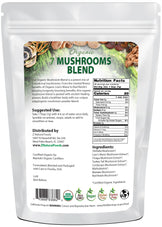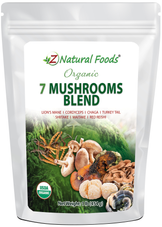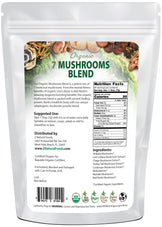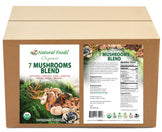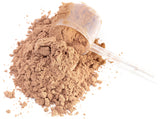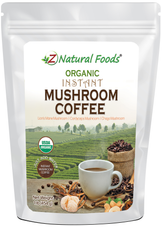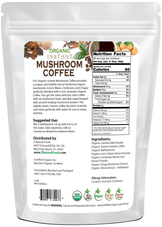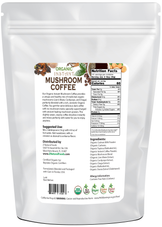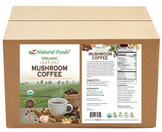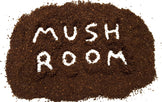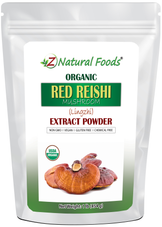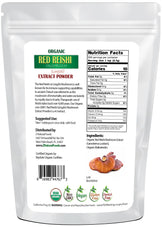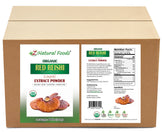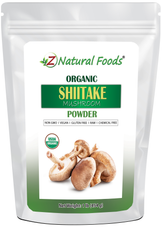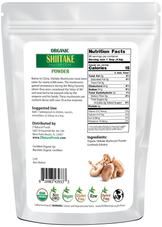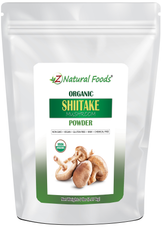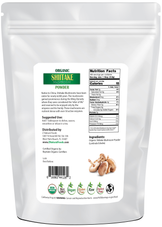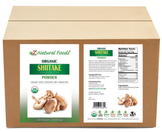Description
Description
People tend to confuse mushrooms for plants since they eat them as vegetables, but mushrooms are actually a fungal growth.
While many are edible, some mushrooms are very toxic to humans and must be avoided.
Edible mushrooms are one of the most nutrient-rich foods you could eat. Further, people have been using them as traditional medicine for centuries.
What are the 7 most nutritious mushrooms?
There are over 10,000 types of mushrooms. Here are 7 of the most trusted mushrooms that have a long history of medicinal use and are high in nutrition:
This article examines these seven highly nutritious mushrooms which you may want to include in your diet
Which mushroom has the best health benefits?
Mushrooms are a superfood containing nutrients such as selenium, vitamin B, the antioxidant ergothioneine, and natural fibers. We examine the top seven mushrooms to figure out the one with the best health benefits:
1. Chaga
It doesn’t display like a conventional mushroom, often appearing like a black growth on a tree trunk. Chaga mushrooms chiefly grow in low-temperature regions in northern Europe and Asia, primarily used as a traditional medicine to improve one’s health.
Researchers found that it may have some illness and disease prevention capabilities, and its use may support a healthy cardiovascular system. You can use Chaga as a supplement or crush it to a powder and add to tea.
2. Maitake
The mushroom grows at the base of trees and has a distinct earthy aroma. In Japan, it goes by the name ‘dancing mushroom.’
Maitake mushrooms have a great nutritional profile which contributes to their health benefits, including:
- Polysaccharides such as beta-glucan that lowers cholesterol levels.
- Vitamins such as vitamin B6 help produce antibodies. It also has vitamin D3 that is responsible for bone formation.
- Riboflavin helps promote myelin sheath formation. The myelin sheath forms a protective coat that insulates nerve cells.
3. Red Reishi mushrooms
This is a rare mushroom that grows in humid areas with low lighting. The Chinese used it for tonic treatment. They regarded them as the mushroom of immortality because of their excellent healing capabilities.
Major constituents of red reishi mushrooms are fat proteins and fiber. Artificially cultivated reishi mushrooms have high levels of crude protein and carbohydrates. Its other health benefits include:
- Acts as an anti-allergen by inhibiting allergic reactions such as asthma.
- Has sleep-inducing factors that help combat insomnia.
4. Turkey tail
These fungi have a characteristic disc shape that resembles a turkey’s tail. It has reduced fats, sodium, and carbohydrates, making it one of the best natural foods.
It has compounds such as polysaccharides, phospholipids, and some amino acids, which the Japanese use to boost their immune systems.
Additionally, it has flavonoids that give it antioxidant properties, which may relieve oxidative stress and may reduce inflammation.
You can incorporate turkey tail to your diet by adding the powder to your favorite dishes. It is slightly sweet, so you can eat it as a snack or add it to your favorite smoothie.
5. Shiitake
Shiitake are popular mushrooms found in many countries. It has a savory taste, so people usually use it to prepare oriental dishes. Most shiitake mushrooms come from Japan.
These brown-capped mushrooms contain over 15 nutrients, such as vitamin B5, riboflavin, and proteins. Dry shiitake also has vitamin D.
It contains different enzymes, such as pepsin, which aid in the digestive processes. Recent studies have shown shiitake to possess properties that may support some disease prevention.
One can use Shiitake mushrooms as food when prepared like a stew. You can also take it as a supplement.
6. Lion’s mane
As the name suggests, this mushroom has long hair-like structures that resemble a lion’s mane. It is white and native to European and Asian countries.
Lion’s mane mushroom has both culinary and medicinal uses. The mushrooms boast a wide range of nutrients including carbohydrates, phytosterols, minerals, and amino acids.
Studies show that the mushroom might help protect against mental illnesses like dementia. Culinary uses of lion’s mane include adding them to beverages such as tea, or you can fry and eat it as whole food.
7. Cordyceps
These parasitic fungi infect the larvae of moths as they grow, deriving nourishment from them. This kills the larvae, and the fungus will then sprout from the head of the dead larvae.
Traditionally, Tibetans used cordyceps for medicinal purposes, such as diabetes management and supporting some sickness and disease care.
You can use the Cordyceps mushroom extract in soups, salads or by adding a dash to your tea or smoothie.
If you prefer other types of mushroom superfoods, these offer significant nutritional benefits:
A great way to increase your nutritional intake is by eating mushroom superfoods such as the above. They contain nutrients such as proteins, antioxidants, vitamins, minerals, phytonutrients and other micronutrients.
Mushrooms are great for supporting your body’s immune system, maintaining normal blood sugar levels, and supporting a healthy inflammation response.
Visit Z Natural Foods today for more information on mushrooms and other superfood powders.
References
Wu, Jian-Yong, Ka-Chai Siu, and Ping Geng. "Bioactive Ingredients and Medicinal Values of Grifola frondosa (Maitake)." Foods 10, no. 1 (2021): 95. https://www.ncbi.nlm.nih.gov/pmc/articles/PMC7824844/
Lee, Sung Hak, Hee Sun Hwang, and Jong Won Yun. "Antitumor activity of water extract of a mushroom, Inonotus obliquus, against HT-29 human colon cancer cells." Phytotherapy Research 23, no. 12 (2009): 1784-1789. https://pubmed.ncbi.nlm.nih.gov/19367670/
Harvard University. (n.d). Mushrooms. The Nutrition Source. [online] Available at: https://www.hsph.harvard.edu/nutritionsource/food-features/mushrooms/ [Accessed 5 December 2021].
Babu, P. Dinesh, and R. S. Subhasree. "The sacred mushroom “Reishi”-a review." American-Eurasian Journal of Botany 1, no. 3 (2008): 107-110. https://citeseerx.ist.psu.edu/viewdoc/download?doi=10.1.1.508.8752&rep=rep1&type=pdf
Benson, Kathleen F., Paul Stamets, Renee Davis, Regan Nally, Alex Taylor, Sonya Slater, and Gitte S. Jensen. "Trametes versicolor and its fermented substrate show potent immune activating properties in vitro." BMC complementary and alternative medicine 19, no. 1 (2019): 1-14. https://www.ncbi.nlm.nih.gov/pmc/articles/PMC6889544/
U.S. Department of Agriculture. 2021. Mushroom, lion's mane. [online] Available at: https://fdc.nal.usda.gov/fdc-app.html#/food-details/1999626/nutrients [Accessed 5 December 2021].
U.S. Department of Agriculture. 2019. Mushrooms, shiitake, dried. [online] Available at: https://fdc.nal.usda.gov/fdc-app.html#/food-details/168436/nutrients [Accessed 5 December 2021].
Panda, Ashok Kumar, and Kailash Chandra Swain. "Medicinal potential of Cordyceps sinensis." Journal of Ayurveda and integrative medicine 2, no. 1 (2011): 9. https://www.ncbi.nlm.nih.gov/pmc/articles/PMC3121254/